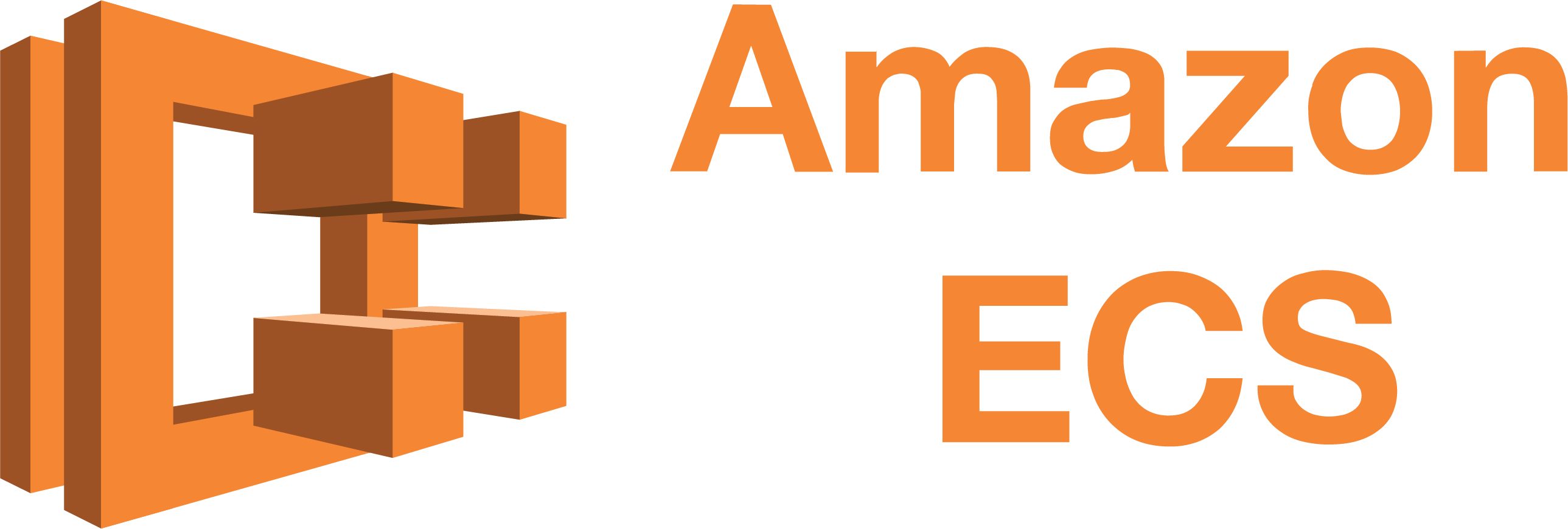Updated November 17, 2025
In modern software delivery the pressure to iterate quickly is real. Kubernetes sparked a revolution in container orchestration, and it remains a huge forward step for many teams. But the truth is, adopting Kubernetes is not a guarantee that you'll suddenly move faster or reduce pain. Managing a Kubernetes cluster at scale requires deep expertise, dedicated operations, and often more overhead than many organizations anticipate.
This has led many companies to explore Kubernetes alternatives . Not just wrappers on top of Kubernetes, but true alternatives that reduce operational overhead and remove unnecessary layers.
Why Someone Might Want an Alternative to Kubernetes
Kubernetes is impressive, but it is not simple. Even seasoned engineering teams are often surprised by how much effort it takes to operate it at scale. Some of the most common reasons companies start searching for alternatives include:
- The operational burden grows quickly. Teams must manage cluster lifecycle, upgrades, scaling logic, storage integration, network overlays, and constant patches.
- Complexity increases security risk. Misconfigurations create openings for vulnerabilities or performance failures.
- Costs escalate. Infrastructure, specialized staff, supporting tools, and DevOps overhead all add up.
- Finding engineers with true Kubernetes experience can be difficult and expensive.
- Many companies do not need full Kubernetes capabilities and would prefer something focused and predictable.
If your team wants orchestration without constant firefighting, and you want speed and reliability without building an SRE department, then exploring alternatives is worth your time.
Standalone Orchestrators That Do Not Use Kubernetes
By steering clear of Kubernetes, these platforms avoid the layers of complexity that come with building on top of it, allowing them to deliver cleaner, more intentional orchestration systems.
| Kubernetes Alternatives | Pricing | Key Feature |
|---|---|---|
| Cycle.io | Starting at $500 | Unified hybrid-cloud container and VM orchestration |
| Docker Swarm | Open Source | Simple native Docker orchestration |
| Amazon ECS | Pay as you go | AWS native container orchestration |
| HashiCorp Nomad | Enterprise plans starting at $66,000/yr | Lightweight multi workload scheduler |
Cycle.io
Cycle.io is built with a LowOps philosophy that prioritizes simplicity, reliability, and real world scalability. It is a full platform level orchestrator with a native network, storage, and compute stack designed specifically for unified container and VM workloads. Cycle avoids Kubernetes and Docker runtimes entirely, which removes the operational burden, constant tuning, and ecosystem overhead that come with them.
For teams running serious production applications across hybrid cloud or on premises environments, Cycle delivers a clean and predictable path to modern infrastructure without the need for a large DevOps footprint.The main tradeoff is that Cycle's community and ecosystem are still growing so teams may encounter fewer external references or established best practices.
Docker Swarm

Docker Swarm is a Docker native orchestrator built for teams that want a fast and lightweight way to run containers without adopting a complex control plane. It is easy to set up and works well for small applications that do not require advanced scaling, multi environment orchestration, or mixed workloads like containers and virtual machines. Swarm offers a straightforward experience, but for larger or mission critical systems its limited feature set and slowing community momentum make it less suitable as a long term platform.
Amazon ECS

Amazon ECS is a fully managed orchestrator built directly into the AWS ecosystem. It offers a simpler operational model than Kubernetes and integrates cleanly with other AWS services, making it a practical option for teams that operate entirely inside Amazon's cloud. ECS is reliable for container workloads, but it does not support virtual machines and it is tightly coupled to AWS infrastructure. For organizations that want portability or hybrid cloud flexibility, ECS can be restrictive because workloads are designed around a single provider.
HashiCorp Nomad

HashiCorp Nomad is a lightweight scheduler designed to run containers, virtual machines, and non containerized applications with minimal overhead. It is easy to deploy and fits well in environments already using HashiCorp tooling. However, Nomad focuses on workload scheduling rather than full platform orchestration, which means networking, storage, service discovery, and other critical components must be assembled separately. This can create complexity for teams that need a unified and scalable infrastructure platform.
Serverless Container Platforms
Serverless container platforms let teams run workloads without thinking about nodes or clusters. They are great for simple, stateless applications but come with tradeoffs in flexibility, portability, and long term architecture. They can reduce operational effort, but they are not full orchestrators, and they do not replace the capabilities teams expect from platforms like Cycle.
| Serverless Container Platforms | Pricing | Key Feature |
|---|---|---|
| Google Cloud Run | Pay as you go | Serverless containers on GCP |
| Azure Container Instances | Pay as you go | Fast on demand container execution |
Google Cloud Run

Google Cloud Run is a serverless runtime for containers built on Knative and backed by Google Kubernetes Engine. It allows you to deploy stateless applications without managing clusters, nodes, or control planes. Cloud Run is fast and convenient, but it trades flexibility for simplicity and is tightly connected to Google Cloud. Teams that need custom networking, mixed workloads, or hybrid deployments may find its limitations restrictive.
Azure Container Instances

Azure Container Instances provide quick, on demand container execution without requiring Kubernetes or any other orchestrator. ACI is ideal for burst workloads, batch processing, or simple services that do not require a full orchestration platform. It offers strong convenience for Azure focused teams but lacks advanced scheduling, multi workload support, and the broader infrastructure capabilities needed for complex applications.
Kubernetes Wrappers (Only if you really still need Kubernetes)
If your organization has made large investments in Kubernetes, or you have workloads that absolutely require the Kubernetes ecosystem or you must comply with specific enterprise standards then you might consider a Kubernetes wrapper. These are managed platforms that “tame” Kubernetes but do not eliminate its underlying complexity.
| Kubernetes Wrappers | Pricing | Key Feature |
|---|---|---|
| Red Hat OpenShift | Subscription required | Enterprise grade K8s platform |
| VMware Tanzu | Starting at $995 | Deep VMware ecosystem integration |
Red Hat OpenShift

Red Hat OpenShift is an enterprise platform built on Kubernetes that provides opinionated workflows, integrated CI and CD tooling, robust RBAC, and strong security defaults. It is designed for large organizations that want a curated Kubernetes experience supported by Red Hat's ecosystem. OpenShift simplifies certain operational tasks, but since Kubernetes remains at the foundation, teams still inherit the complexities of cluster management, upgrades, and container networking.
VMware Tanzu

VMware Tanzu extends Kubernetes into the VMware ecosystem by integrating it closely with vSphere, NSX, and other VMware infrastructure. It helps enterprises modernize workloads without leaving their existing virtualization investments. Tanzu standardizes Kubernetes operations within VMware environments, but it continues to rely on the full Kubernetes control plane, which means teams must still manage much of the same operational overhead and architectural complexity.
Why Cycle.io Stands Out
Cycle is the strongest choice for teams that want to run modern applications without inheriting the operational weight of Kubernetes. It is built for organizations that value simplicity, predictability, and hybrid cloud flexibility, and it delivers a complete orchestration experience without requiring a cluster management background. Cycle removes the layers that make Kubernetes challenging, replaces them with a unified platform, and gives teams clean and reliable infrastructure operations from day one.
To make up for the smaller industry footprint, the Cycle team has built a powerful and responsive support team of real engineers with deep experience in DevOps to help with onboarding and using the platform.
| Cycle.io | Kubernetes | |
|---|---|---|
| Ease of Use | Fully managed, minimal setup | Complex, requires expertise |
| Infrastructure | Automated (no node management), direct integrations | Manual setup required |
| Scaling | Built-in auto-scaling | Configurable but manual |
| Networking | Pre-configured private networking | Requires CNI setup |
| Storage | Built-in persistence | Manual volume setup required |
| Security | Secure by default | Requires manual hardening |
| Flexibility | Opinionated, optimized | Highly customizable but complex |
| On-Prem Support | Yes, with automated deployment | Yes, but requires laborious manual setup and ongoing maintenance |
| Best For | Teams wanting simplicity | Enterprises needing deep customization |
Cycle automates infrastructure lifecycle, networking, storage, and workload management so teams can focus on building applications instead of maintaining clusters. It includes native support for containers and virtual machines, integrated private networking, built in persistence, and hybrid cloud support with automated on premises deployment. Everything is designed with a LowOps mindset that avoids the day two operational grind that Kubernetes often creates.
Kubernetes remains a powerful tool for organizations that need deep customization, complex multi layer architectures, or tightly controlled enterprise environments. However, for the majority of engineering teams that want to move faster with fewer operational demands, Cycle provides a more direct and sustainable path to production.
Wrapping Up
There are plenty of Kubernetes alternatives available today, but choosing the right platform for your team is not always straightforward. At Cycle, our goal is to provide customers with all the information they need to make an informed decision about the best Kubernetes alternative for their use case. Like any technological decision it's best to vet out fully what your requirements are, and compare your available alternatives before making a decision. If you are interested in having Cycle a part of your Kubernetes alternative evaluation our team is here to help!
📩 Reach out today to see how Cycle works for your team!

